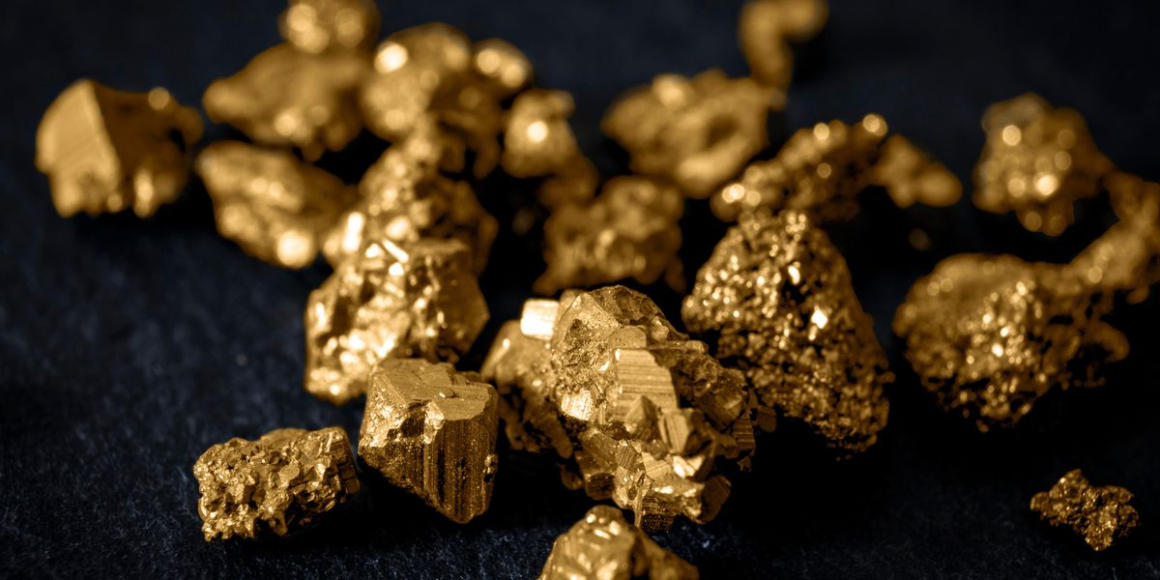Australia is currently tied with Russia for second place in global gold production.
With gold’s price trading at historic highs, it’s a good time for investors to find out more about gold mines in Australia.
Read on for a look at where gold is mined in Australia and how much gold is produced at the biggest Australian gold mines.
Overall, according to statistical data provided by the government of Western Australia, the state alone produced 211.22 tonnes of gold in 2023 compared to just 80.73 tonnes of gold produced in the rest of the country.
Both the Pilbara and Witwatersrand are similar in age and composition, sitting on top of the Archean granite-greenstone basement. The Pilbara area hosts numerous small mesothermal gold deposits containing conglomerate gold — mineralisation known to hold large, high-grade gold nuggets.
Newmont expects production at Boddington to decline significantly in 2024, setting guidance at only 575,000 ounces, which it attributes to lower-grade ore. However, the company expects production to increase in 2026 as it works to complete laybacks in the north and south pits.
The mine produced 147,000 ounces of gold in the second quarter of 2024.
Cadia produced 117,000 ounces of gold in the June quarter of 2024.
KGCM produced 116,690 ounces of gold during the second quarter of 2024.
The mine spans 3,600 square kilometres and stretches over close to 160 kilometres in strike length along the Yilgarn Craton and Fraser Range mobile belt collision zone. The regional geology is dominated by granitoid rocks, making it a rare example of a large gold deposit within high-grade metamorphic rocks that have undergone widespread recrystallisation and melting.
Tropicana produced 102,763 ounces of gold during the second quarter of 2024.
Tanami has been fully owned and operated by Newmont since 2002 and is located in the Northern Territory’s remote Tanami Desert. Both the mine and the plant are located on Aboriginal freehold land that is owned by the Warlpiri people and managed on their behalf by the Central Desert Aboriginal Lands Trust.
Tanami is a fly-in, fly-out operation in one of Australia’s most remote locations. The asset is 270 kilometres away from its closest neighbours, the remote Aboriginal community of Yuendumu.
Tanami produced 99,000 ounces of gold in the June quarter of 2024.
Owned by Evolution Mining, Cowal is the company’s largest gold-producing asset. The mine is located near Bland Shire in New South Wales within the traditional lands of the Wiradjuri people.
Due to high gold prices and strong production numbers, the company reported that it has been able to repay capital costs for the acquisition and expansion at Cowal. In total, the mine generated AU$604.9 million in fiscal 2024.
Cowal produced 94,826 ounces of gold in the quarter ending June 30.
Jundee is located in the Northern Goldfields region of Western Australia and is owned by Northern Star after the miner purchased it from Newmont in 2014 for AU$82.5 million. The property is well known due to the fact that it solely uses underground mining. Along with Cadia Valley, Jundee is one of the lowest-cost gold producers on this list.
In its 2024 report released in August, the company reported that three of the four planned wind turbines have been installed, with the fourth on track for commissioning later in 2024.
During the second quarter of 2024, Jundee produced 72,661 ounces of gold.
St. Ives produced 70,147 ounces of gold in the second quarter of 2024.
Owned by Regis Resources, Duketon is located in the North Eastern Goldfields of Western Australia. The operation is composed of the Garden Well and Rosemont mines, with both hosting open pit and underground operations.
The primary processing facility at Garden Well has a 5 million tonne per annum throughput rate with a two-stage crushing circuit, scrubber and ball mill, as well as a 7.5 million tonne per annum carbon-in-leach circuit, which also handles slurry from Rosemont.
During the quarter ending June 30, Duketon South produced 66,102 ounces of gold.
The company has forecast continued declines from Fosterville putting the mid-point of guidance at 210,000 ounces in 2024, 150,000 ounces in 2025 and 150,000 ounces in 2026. The expectation is the Swan zone will be largely depleted by the end of 2024. Steeper declines will be offset by improved ventilation, increasing the mining rate at Robbins Hill by 10 percent.
Fosterville produced 65,963 ounces of gold during the second quarter of 2024.
Investing in Australian gold stocks is similar to stocks in other sectors. Gold companies issue shares on stock exchanges that are available for investors to trade. When you purchase shares of a gold stock, you are essentially purchasing a stake in the company.
Many gold companies in Australia are listed on the ASX, making them easily accessible to Australian investors. To invest in the companies that are listed on international exchanges, Australian investors will have to use a broker that has access to that market.
For North American investors looking to invest in Australian gold companies, some are dual-listed on Canadian and US stock exchanges as well, making them more accessible.
As for deciding which type of gold company to invest in, whether you choose to invest in gold-mining stocks or gold companies at the development or exploration stage should be based on your risk tolerance. In general, established companies that are producing metal are more stable and less risky than smaller companies that are still exploring for gold or building a mine.
Although no investing strategy is 100 percent foolproof, experts often recommend gold stocks as a way to hedge exposure to general stock market. That’s because they tend to move in tandem with the price of gold.
This is an updated version of an article first published by the Investing News Network in 2019.
Securities Disclosure: I, Dean Belder, currently hold no direct investment interest in any company mentioned in this article.


Leave a Reply